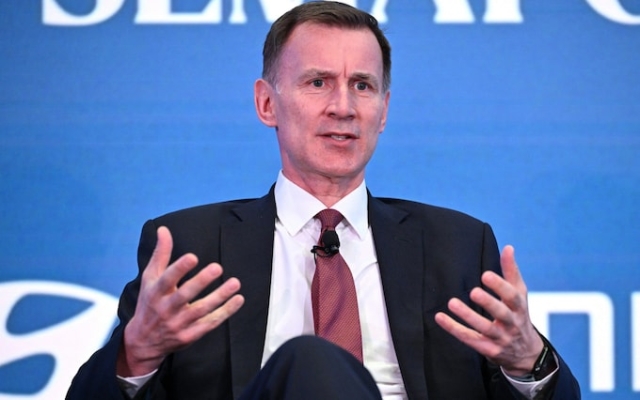 Jeremy Hunt misses annual borrowing target, dealing blow to tax-cut ambitions ahead of election Photo: MANDEL NGAN/AFP
Jeremy Hunt misses annual borrowing target, dealing blow to tax-cut ambitions ahead of election Photo: MANDEL NGAN/AFP
Inheritance tax receipts soared to record levels last year following Jeremy Hunt's undercover raid.
Data published by HM Revenue & Customs said it received £7.5bn in inheritance tax (IHT) revenue for the financial year to the end of March, up £400m on the same period last year.
Official forecasts suggest inheritance tax revenue could exceed £9.50. billion before the end of the decade.
Mr Hunt has faced repeated calls to scrap inheritance tax and the Tories are understood to have considered including a plan to scrap it in last year's autumn statement before opting instead to cut the national insurance.
The amount received from IHT has risen sharply over the past few years after the Chancellor froze the £325,000 payment threshold until 2028, preventing it from rising in line with inflation and forcing more families to pay.
It comes after official figures showed Jeremy Hunt missed his annual borrowing target, dealing a blow to the Chancellor's ambitions to cut taxes again ahead of the election.
The deficit stood at £11.9 billion last month, the data shows. published by the Office for National Statistics (ONS).
This is higher than the £10 billion predicted by economists and means the government has borrowed £120.7 billion to plug the gap between tax receipts and public spending in 2023-2023. FY 24.
It is also £6.6bn above the borrowing target set just a month ago by the Office for Budget Responsibility (OBR), the Government's tax and spending watchdog.
Mr Hunt told the Telegraph on last week that he would like to cut national insurance by a further 2p before the next election, but only if public finances allow.
Ruth Gregory of Capital Economics said the figures suggested this was not possible.< br />She said: “If the Chancellor had hoped the March figures would provide more scope for tax cuts at the fiscal event later in the year, he will be disappointed.”
“Simply based on a larger-than-expected budget. deficit and the recent rise in market interest rates, he may have even less fiscal headroom (perhaps around £5bn) for tax cuts than the £8.9bn left in March.»
Figures showed total tax receipts rose 7.4% to £750bn in the latest financial year as corporation tax receipts jumped by a fifth and income tax and VAT revenues also rose.
However Stamp duty receipts fell amid turbulence in the housing market, and income tax paid by self-employed workers also fell slightly.
The figures also show that the government transferred almost £45 billion to the Bank of England. last year to cover losses under the bond purchase program. During the financial crisis and pandemic, the Bank accumulated about £900 billion in debt, making a profit because the yield on the bonds it bought exceeded the interest it paid to commercial banks on reserves.
However, this turned into losses because The bank raised interest rates to 5.25% after Russia's invasion of Ukraine.
The bank is also selling some of its bonds at large losses as it actively winds down operations. its balance. The bank now estimates a total net loss to taxpayers of £80 billion over the next decade.
While this has no impact on annual borrowing, it does add to the UK's debt pile, which now stands at 98.3% of GDP. That's up 2.6 percentage points from a year ago and remains at levels last seen in the early 1960s.
A Treasury spokesman said: “Debt has increased in recent years because we've rightly protected millions of jobs during Covid and paid half of people's energy bills after Putin's invasion of Ukraine sent bills soaring.
“We can't leave future generations to foot the bill, so we must stick to the plan to reduce debt. And with inflation falling and wages rising, we have been able to cut National Insurance by a third, which shows our determination to end double taxation on labour.”























































Свежие комментарии